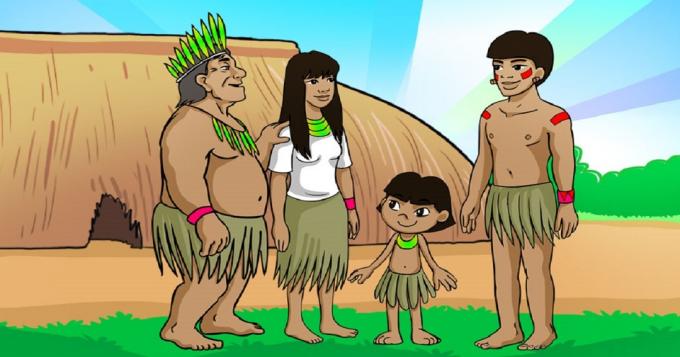
During the Indian's day, schools and other cultural and educational institutions encourage children and young people to get to know the different cultural practices of the indigenous people and in this post we selected several ideas and suggestions for the your Indian Day Project for Kindergarten and Elementary Education.
The little indian:
Indians:
Index
Like this Dia do Índio Project for maternal We will work with the following areas of knowledge: Oral/Sound/Musical Language, Plastic Language, Nature and Society and address the following contents: Fine/gross motor coordination; sounds, body expression, indigenous culture and colors.
The highlighted theme “O Índio”, aims to promote the development of a critical conscience in students, aware of their role as subjects and objects of History.
The proposal of the project is to spread traditional dances and games of the indigenous people, presenting, in addition to the cultural richness, the tradition of the tribe present in the music.
In this way, the teacher's role is the mediator, starting from the child and provoking new discoveries and productions. Working with projects implies teaching in a different way, taking into account how the children learn and the best way to provide them with different types of interactions/experiences.
Create playful teaching strategies that lead children to:

Indian Day Project for Initial Series
Proposals for Integration Activities of Study Areas:

Indian Day Project for Early Childhood Education – Jardim 1
The theme allows the student to perceive themselves in other social groups, helping them to build their identity, in acting as the other group in social life, in the preservation of the environment in which they live and in the construction of values.
Curumim goes to Oca!
Tip: This game was based on the COELHINHO SAI DA TOCA game
Indian Day Project
According to the PCN, it is necessary for the student to know and value the plurality of Brazilian sociocultural heritage, as well as sociocultural aspects of other peoples and nations, taking a stand against any discrimination based on cultural, social class, belief, sex, ethnic or other individual characteristics and social.
The Indian Day is a rescue of our history and our roots.
Check it out at: Activities for the Indian Day – 1st and 2nd year


See too: 15 suggestions for songs about the Indians

This Indian Day Project for Early Childhood Education, which we will make available below, was prepared by teacher Valéria Tavares and belongs to her wonderful blog: www.ensinandocomcarinho.com.br
The commemorative dates must be worked interdisciplinary in class. The Indian's Day is a special date that is always widely explored among children, making them know and value the plurality of Brazilian sociocultural heritage, in addition to cultural differences, the different peoples. Working the day of the Indian is to rescue our history and our roots. The project helps students to understand and build their identity and perceive themselves as an integral part of a society full of unique characteristics, values and cultures.
Complementary resources:
Subscribe to our email list and receive interesting information and updates in your email inbox
Thanks for signing up.
